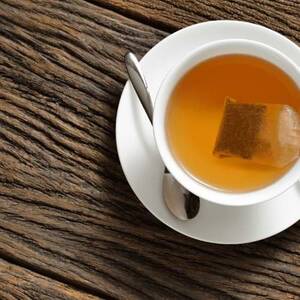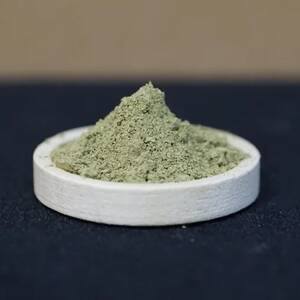Nutritional Value Of Kratom: The word “Kratom” refers to a tree in Southeast Asia that is a member of the coffee family. Mitragyna Speciosa is cultivated in these countries along with Thailand, Malaysia, and Indonesia. The dried leaves of this plant are consumed as a tea or packed and marketed as a dietary supplement. Its leaves can also be smoked as an alternative to tobacco.
Some specialized shops, health food stores, and electronic cigarette retailers sell Mitragyna leaves, powder, and capsules. Common applications include treatment for chronic discomfort, mental illness, and substance dependency. Mitragynine and 7-hydroxy mitragynine, the two main active chemicals in this herb, operate our brain receptors and have fewer negative effects.

What Is the Nutritional Value Of Kratom?
To make conclusive arguments about the nutritional value of Kratom, a significant amount of study is required. On the other hand, we know that each new research on it will offer exciting and unexpected information.
The pharmacological effects of Kratom are the primary focus of these undertakings, but the nutritional value of Kratom is also gaining attention.
The herbal tree’s leaves contain a wide variety of alkaloids and contain several substances with useful nutrients.
Can We Use Kratom For Its Nutritional Benefits?
There are indeed some nutrients in Mitragyna. On the other hand, you may get it in many different regions of the world; nevertheless, the packaging will clearly state that it is not fit for human consumption. Weird, right?
There isn’t enough research on Kratom’s health advantages. Therefore, it is marketed as a herb, and shopkeepers are restricted from recommending strains or dosages.
It is not recommended unless someone has already discussed it with their primary doctor. Only your doctor is authorized to provide you with medical advice about Speciosa. A single scientific study has partially uncovered the nutritional value of Kratom leaves. Here is a list of the nutrients in Kratom.
- Vitamin A
- Vitamin B1
- Vitamin B2
- Vitamin B5
- Vitamin B6
- Vitamin C
- Vitamin E
- Vitamin K1
- Calcium
- Iron
- Magnesium
- Phosphorous
- Potassium
- Sodium
- Zinc
Ideally, the soil would be the only source of nutrients for all vegetation. Most will produce the above vitamins, protein, and omega fatty acids.
It is safe to conclude that the vitamins and minerals we have listed are present in the plants we have produced from the ground. It is thus possible to arrive at this conclusion without substantial studies on this medical plant.
Because it is a leafy plant, it is bound to be full of fiber. It is important to remember, too, that not all of the fiber in these plants is digestible. The digestive tract benefits from consuming this kind of fiber. Fiber is the factor that is responsible for assisting your body in eliminating waste and cleansing your system.
Alkaloids, flavonoids, tannins, and phenolic chemicals are also abundant in Mitragyna Speciosa, adding to its long list of health benefits. All of them are recognized as natural antioxidants, and their benefits have been shown in previous research.
Consumers often praise this herb for its claimed health benefits. However, there is little evidence supporting this claim. Our findings are based on subjective evidence. Scientific studies must accurately document this herb’s actual presence of vitamin, mineral, and fiber content.
Similar Compounds & Alkaloids
The different alkaloids found in Kratom are responsible for its pharmacological effects. Surely you’re familiar with the alkaloid mitragynine and its “relative” compound, 7-hydroxy mitragynine.
These two chemicals, especially mitragynine, found only in this plant, are crucial to the Kratom alkaloid profile. Over 40 unique alkaloids have been identified in this herb.
More than only the pharmacologically active alkaloids, Mitragyna Speciosa also includes several additional phyto- and micronutrients. For instance, epicatechin and other flavonoids of the flavan-3-ols subclass have been identified. The anticancer and antioxidant benefits of this chemical, as well as its ability to lower blood glucose levels in diabetics, have received massive attention.
The chemicals discovered in Kratom include terpenoid saponins, polyphenols, and glycosides. Sadly, further study is required to determine any potential medicinal or nutritional benefit they may offer.
However, some of these components, including polyphenols and flavonoids, benefit a person’s overall well-being. For example, flavonoids have been linked to antibacterial activity and the neutralization of free radicals, which are unstable atoms with a history of being carcinogenic.
For the most part, the more we learn about it, the more sophisticated and complex its possible uses become.
Quantity & Dosage
Several variables, such as the user’s age, state of health, and more, influence the optimal Kratom dosage. One research found that different amounts of this plant had different benefits, with a low dose being anywhere from 1-5 grams and a moderate dose being anywhere from 5-15 grams.
Unfortunately, additional study is required to identify these dose changes’ short- and long-term effects on the body.
Consult your pharmacist or doctor before adding Mitragyna to your diet due to its high potency and the lack of studies establishing acceptable ingestion quantities.
Conclusion
Unfortunately, Kratom can only provide a small number of vitamins to a person’s diet. Its leaves have several potential health benefits, including many Phyto- and micronutrients. Isolating, identifying, and studying the nutritional value of Kratom, such as flavonoids and polyphenols, is an area that needs greater attention.

FAQs
Does Kratom Have Any Nutritional Benefits?
Currently, it doesn’t add many essential vitamins to a person’s diet, which limits its nutritional value. Its nutritional value is not as high as other foods, but it provides some.
What Are Kratom’s Active Ingredients?
There are two primary active components in its leaves (mitragynine and 7-hydroxy mitragynine). The crushed leaves may be smoked, added to tea, or converted into tablets or capsules. Mitragyna Speciosa, also known as Thang, Kakuam, Thom, Ketum, and Biak, has been used for centuries throughout Southeast Asia.


Latest from our blog
Please Read….This is Urgent
In loving memory of Ryan, a special individual who recently passed away, we honor his [...]
Damiana Exposed: Special Look At Turnera diffusa (2023)
Damiana Exposed: Special Look At Turnera diffusa (2023) Damiana is a wild shrub native to [...]
Kanna: A New Look At An Exciting Mood Booster (2023)
What is kanna? Some say the botanical has similar effects to MDMA, or ecstasy. Others [...]
Blue Lotus Flower: Unveiling Its Mystical & Therapeutic Powers
To cut to the chase and pickup potent 25x blue lotus extract today while enjoying [...]
Red Bubble Kratom Extraction: A Comprehensive Guide
As a kratom enthusiast, have you ever wondered if there was a method for getting [...]
Aug
Maeng Da Kratom 101: Accurate Info You Can Trust
Maeng Da kratom may be the most popular kratom strain on the market today. The [...]
Aug